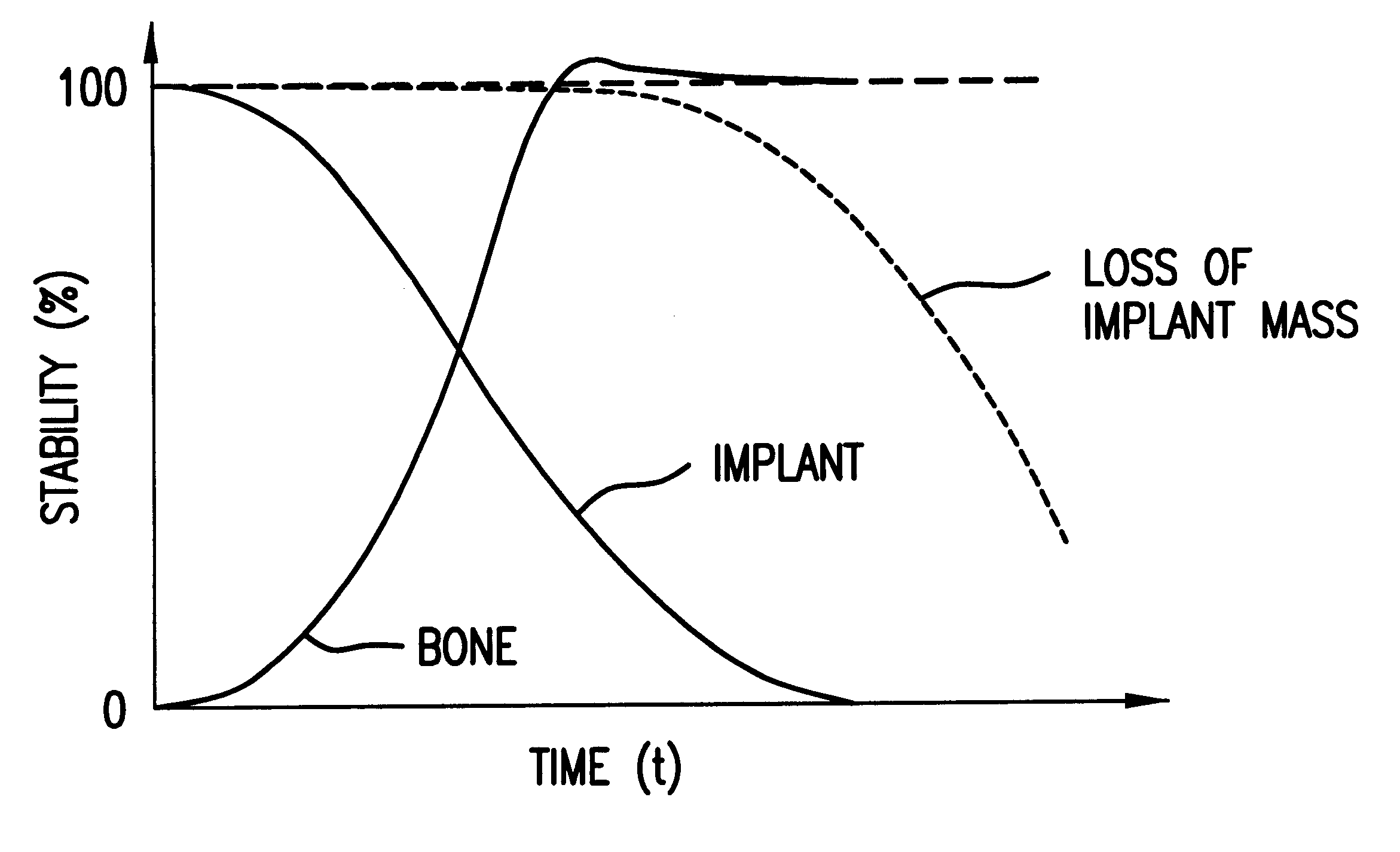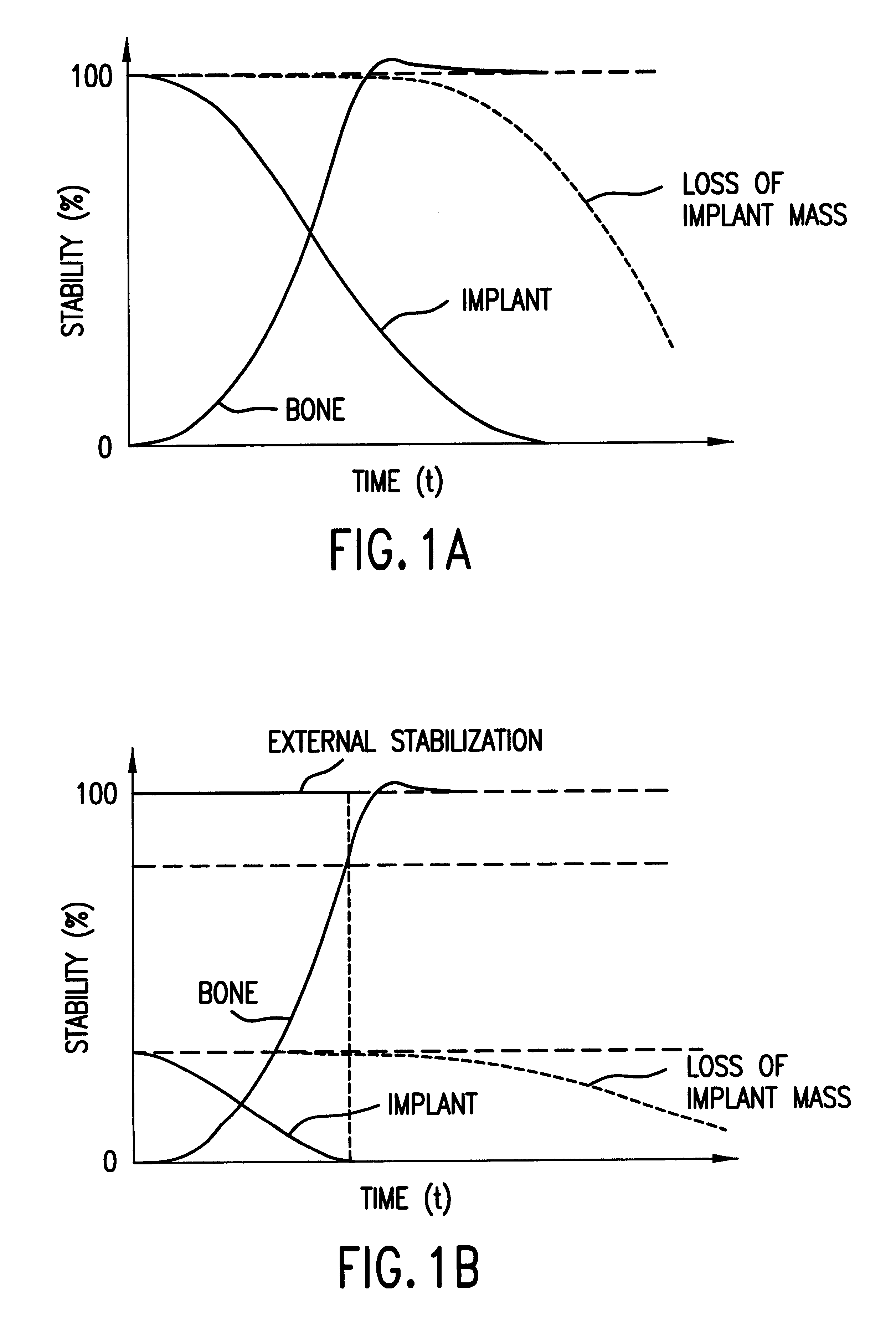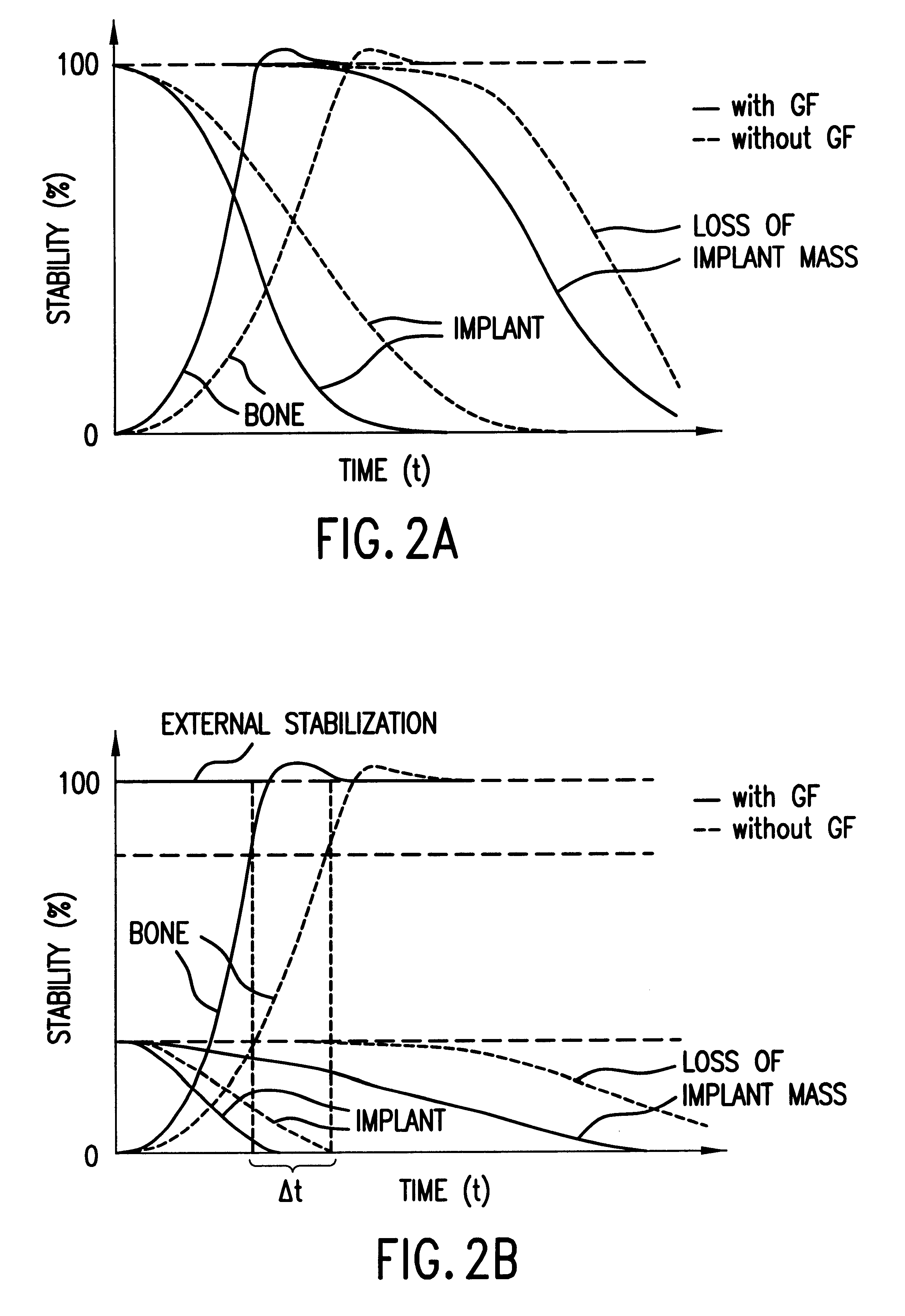Biodegradable osteosynthesis implant
- Summary
- Abstract
- Description
- Claims
- Application Information
AI Technical Summary
Problems solved by technology
Method used
Image
Examples
Embodiment Construction
The growth factors (GF), which can be employed with this invention, are members of the group of epidermal growth factors (EGF) or of insulin-like growth factors (IGF) or of transforming growth factors beta (TGF-beta) or of the fibriloplast growth factors (FGF). It is also possible to employ suitable combinations of two or more of these growth factors. Many of the above growth factors are commercially available as freeze-dried powders which are converted into one of the following formulations for producing implants in accordance with this invention:
a) Into a solution with a suitable solvent, for example water or 0.1M acetic acid for IGF, wherein concentrations of 1 to 10 ng / ml are advantageous;
b) Deposited in a lycogel or a xerogel;
c) Encapsulated or deposited in biodegradable material, wherein the encapsulation of the GF in micro-capsules made of a suitable biodegradable material, such as polylactide, can be performed for example by means of "in water drying" of w / o / w emulsions. Mas...
PUM
| Property | Measurement | Unit |
|---|---|---|
| Shape | aaaaa | aaaaa |
| Mechanical properties | aaaaa | aaaaa |
| Biodegradability | aaaaa | aaaaa |
Abstract
Description
Claims
Application Information
 Login to View More
Login to View More - R&D
- Intellectual Property
- Life Sciences
- Materials
- Tech Scout
- Unparalleled Data Quality
- Higher Quality Content
- 60% Fewer Hallucinations
Browse by: Latest US Patents, China's latest patents, Technical Efficacy Thesaurus, Application Domain, Technology Topic, Popular Technical Reports.
© 2025 PatSnap. All rights reserved.Legal|Privacy policy|Modern Slavery Act Transparency Statement|Sitemap|About US| Contact US: help@patsnap.com



